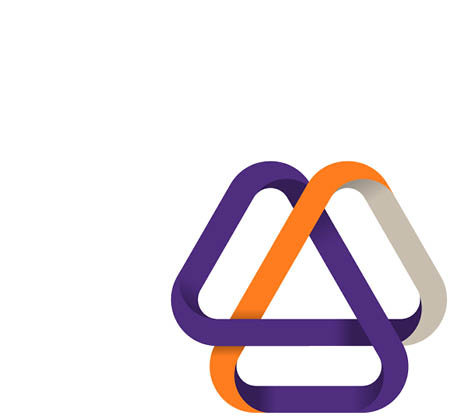-
International Financial Reporting Advisory Services
IFRS reporting advisory serivces of Grant Thornton are carried out by our dedicated team with expertise in IFRS implementation.
-
Audit Services
• Statutory audit • Review of financial statements and financial information • Agreed-upon procedures • FRAS services • Compilation of financial information • Reporting accountant • Cross-border audit • US GAAP audit
-
Audit Quality
We have various methods of monitoring our system of quality control and engagement quality, including real-time involvement of coaches and national office personnel on select audit engagements, reviews of issuer audit engagements prior to archiving by someone outside of the engagement team, and internal inspections of assurance engagements and the system of quality control.
-
Audit Approach
Audit Approach
-
Licensing services
Licensing services
-
International tax planning
Our extensive international network provides us with significant resources to meet all your expansion goals. We strive to develop commercially focused and tailored tax strategies to minimise tax exposures and maximise business efficiency.
-
Expatriate tax planning
We have a broad knowledge base and skills to assist you keep your personal income taxes to a legitimate and reasonable level, while remaining compliant with legislation. We can develop a personalised package for each key employee to take maximum advantage of the exemptions and incentives available.
-
Tax advisory
We will review the proposed business model and transactions and advise on tax implications and recommendations to optimize the tax opportunities under the local regulations and treaties which Vietnam entered into. Furthermore, we coordinate with our GT global tax team to provide a comprehensive tax advisory for the countries involved in the business model and transactions.
-
Tax compliance services
This service is designed to assist enterprises to cope with the statutory tax declaration requirements in line with the Vietnamese tax laws as well as the frequent changes and updates in tax laws.
-
Tax health check
Our Tax Health Check involves a high-level review of specific tax areas to highlight the key issues that need to be rectified in order to reduce tax risks. Through our extensive experience, we have identified key risk areas in which many enterprises are not fully compliant or often overlook potential tax planning opportunities. Our tax health check service represents a cost-effective method to proactively manage risks and reduce potential issues arising as a result of a tax inspection.
-
Transfer Pricing
Transfer pricing is a pervasive tax issue among multinational companies. In Vietnam, the tax authorities require special documentation to report related party transactions. Compliance with transfer pricing regulations is an important aspect of doing business effectively in Vietnam as failure to do so may result in significant penalties.
-
Tax due diligence
We conduct tax due diligence reviews of target companies to analyse their tax exposure and position in relation to acquisitions, mergers or consolidations. We are able to integrate this service with our Advisory Services department in order to offer a comprehensive, holistic due diligence review.
-
Customs and international trade
Our experienced professionals can help you manage customs issues more effectively through valuation planning and making use of available free trade agreements. We also assist Clients in optimising their customs procedures by making use of potential duty exemptions and efficient import-export structures. Risk mitigation activities include customs audit defense and compliance reviews.
-
M&A Transaction
We advise numerous foreign investors on efficient tax structures for their investments. Our experience allows you to consider all the options and set up a corporate structure that meets both operational and tax efficiency requirements. In short, the structure that is best for you.
-
Industrial Zones – Picking A Location For Your Business
Grant Thornton Vietnam’s one-stop services are designed to provide comprehensive support to both new and current investors who are planning to expand or restructure their business in Vietnam. Our professionals have established strong working relationships with landlords, property developers and authorities at various localities. With extensive experiences in liaison with the relevant agencies, we offer assistance including negotiation on land rental rates and efficient management of licensing process. Our customized and flexible solutions can bring benefits of cost efficient location, accelerate licensing process, and optimize tax opportunities while remaining in compliance with legislation.
-
Tax Audit Support
Tax audit support services provide comprehensive assistance to your business in Vietnam. Recent tax practices have shown the general tendency of launching routine tax audit on yearly basis. Tax authorities have been effectively using more sophisticated methods to identify target entities from across different industry sectors.
-
Business Risk Services
Business Risk Services
-
Transaction Advisory Services
Transaction Advisory Services
-
Valuation
Valuation
-
Business consulting services
Finance Management Advisory
-
Accounting services
Accounting services
-
Taxes compliance within outsourcing
Taxes compliance within outsourcing
-
Payroll, personal income tax and labor compliance
Payroll, personal income tax and labor compliance
-
Secondments/Loan staff services
Secondments/Loan staff services
-
Compilation of the financial and non-financial information
Compilation of the financial and non-financial information
-
Accounting systems review and improvement
Accounting systems review and improvement
-
Initial setting-up for accounting and taxes systems
Initial setting-up for accounting and taxes systems
-
Management accounting and analysis
Management accounting and analysis
-
Comprehensive ERP system solution
ERP software is a tool for business operations, production management, order processing and inventory in the business process. Today, ERP software for small and medium businesses has been greatly improved to help businesses manage their business better. The article below will answer all relevant information about what ERP software is and offer the most suitable ERP solution for businesses. Let's follow along!
-
Analyze Business Administration data
We believe in the value that data can bring to the success and development of every business. Our team helps design data architecture supported by tools, to support business governance and provide useful information to management.
-
Financial reporting compliance solution package
Putting financial issues at the heart, this service helps ensure that financial reports for customers comply with both the requirements of Vietnamese accounting regulations and standards (VAS) as well as reporting standards. international finance (IFRS).
-
Third-party ERP extensions
ERP is a long-term solution that requires long-term travel, not short-term. We understand that many businesses cannot deploy the entire ERP system at once due to many different reasons, instead businesses can deploy each part. Over time, these solutions can be expanded to accommodate improved business processes or can even link completely new processes across different departments.
-
Localize, deploy and rebuild the project
Quite a few ERP projects need to be implemented according to current Vietnamese requirements and regulations, but still comply with common international business requirements. These projects need some improvements and adjustments in the right direction.
-
Consulting on technology solutions
We support the selection and implementation of the most suitable solutions, ensuring business efficiency and performance. We will work closely with customers to plan, evaluate and implement the right technology investment strategies and solutions to meet the development needs of businesses.

-
Offshore company establishment service
Using the offshore company model will facilitate the owner in the process of transaction and expand overseas markets, take advantage of the tax policy with many incentives and protect the value of the family enterprise's assets.
-
Private Trust Advisory
The development of the economy with many modern financial instruments has brought many advantages and opportunities for the enterprises, but there are still certain potential risks in any type of business. So how to protect your asset value with an appropriate company structure while stay compliance with relevant regulations?
-
Our values
We have six CLEARR values that underpin our culture and are embedded in everything we do.
-
Learning & development
At Grant Thornton we believe learning and development opportunities help to unlock your potential for growth, allowing you to be at your best every day. And when you are at your best, we are the best at serving our clients
-
Global talent mobility
One of the biggest attractions of a career with Grant Thornton is the opportunity to work on cross-border projects all over the world.
-
Diversity
Diversity helps us meet the demands of a changing world. We value the fact that our people come from all walks of life and that this diversity of experience and perspective makes our organisation stronger as a result.
-
Contact us
Contact us
-
Available positions
Experienced hires
-
Available positions
Available positions
Nguyen Hung Du and Luong Thuy Trang, of Grant Thornton Vietnam, provide an overview of tax incentives in Vietnam and discuss how foreign investors can make the most of the opportunities available.
Vietnam offers one of the most competitive tax regimes in Southeast Asia, whereby companies and organizations can benefit from the following tax incentives:
- corporate income tax (CIT) incentive;
- import duty exemption for fixed assets; and
- exemption of land rental fee.
CIT Incentives
Preferential tax rates and tax holidays will be granted to new investment projects based on location, industry and scale of the project.
Location-Based Incentives
Encouraged locations are qualifying economic zones, hi-tech zones, certain industrial zones and difficult socioeconomic areas. Investors can benefit from a preferential CIT rate as well as tax holidays with the level of incentive directly tied to the clarification of such regions.
Income from new investment projects in areas with particularly difficult socioeconomic conditions, economic zones, and hi-tech zones will be subject to 15 years of CIT at 10%, four years of CIT exemption and 50% tax reduction for the next nine years.
Income from newly-invested projects based in areas with difficult socioeconomic conditions will be subject to 10 years of CIT at 17%, two years of CIT exemption, and 50% tax reduction for the next four years.
Income from newly-invested projects based in industrial zones, apart from areas with advantaged socioeconomic conditions, will be subject to 10 years of CIT at 17%, two years of CIT exemption, and 50% tax reduction for the next four years.
Industry-Based Incentives
Hi-Tech Industry
In recent years, Vietnam has widely promoted projects in hi-tech industries. Accordingly, enterprises can benefit from the incentive of 15 years of CIT at 10%, four years of CIT exemption and 50% tax reduction for the next nine years applying to the following:
- income of hi-tech entities, agricultural enterprises applying hi-tech; and
- income from new investment projects in: (i) scientific research and technology development; investment in the development of especially crucial infrastructure works as prescribed, software production; (ii) manufacturing composite materials, light construction materials, precious and rare materials; manufacturing reproduction energy, clean energy, energy from destroying waste; developing bio-technology; (iii) environmental protection.
Hi-Tech Transfer
Income from transferring prioritized technology to organizations/individuals in geographical areas with particularly difficult socioeconomic conditions will be tax-exempt.
Enterprises that transfer prioritized technology to organizations/individuals in areas with difficult socioeconomic conditions are entitled to 50% reduction of payable CIT calculated on incomes from technology transfer.
Agribusiness
A 15% tax rate for the project’s lifetime will be applied for income deriving from farming, husbandry, processing of agriculture and aquaculture products.
Specific Sectors
Income from newly-invested projects in manufacture of high-quality steel; production of energy-saving products; manufacture of machinery and equipment for agriculture, forestry, fish breeding, salt production; manufacture of irrigation equipment; production and refining of feed for cattle, poultry and aquatic resources; development of traditional trades and occupations, will be subject to 10 years of CIT at 17%, two years of CIT exemption, and 50% tax reduction for the next four years.
Business of Socialization Activities
Enterprises whose business activity engages in education, vocational training, healthcare, culture, sport, environment, and judicial assessment could enjoy the most favorable CIT incentive of 10% tax rate for the project’s lifetime and four years of tax holiday and 50% tax reduction for the next nine years applied for new investment projects located in difficult socioeconomic areas. Tax holidays of four years and 50% tax reduction for the next five years will be available for a new investment project not located in an encouraged area.
Projects Scale-Based Incentive
Fifteen years of CIT at 10%, four years of CIT exemption and 50% tax reduction for the next nine years will be provided for the project if the following are met:
- income from a newly-established investment project in the sector of production (except for a project producing goods subject to special sales tax, or mineral exploitation project) has investment capital scale at a minimum of 6 trillion dongs ($257 million) being disbursed no later than three years from the date of the investment certificate; and
- total minimum revenue of 10 trillion dongs per year no later than three years from the year generating revenue; or
- minimum headcount of 3,000 full-time employees no later than three years from the year generating revenue.
Exemption of Import Duty for Fixed Assets
Import duty exemption is applied for projects which are classified as encouraged sectors/located in encouraged areas and goods imported with specific circumstances, including:
- machinery and equipment, specialized means of transportation and construction materials (that cannot be produced in Vietnam) comprising the fixed assets of encouraged investment projects;
- machinery, equipment, specialized means of transportation materials (that cannot be produced in Vietnam), office equipment imported for use in oil and gas activities;
- materials, supplies and components imported for the production of exported goods;
- raw materials, supplies, components imported for processing of exports;
- goods manufactured, processed, recycled, assembled in a free trade zone without using imported raw materials or components when imported into the domestic market;
- materials, supplies and components that cannot be domestically produced and which are imported for the production of certain encouraged projects;
- goods temporarily imported or exported for the purpose of warranty, repair, and replacement.
Exemption of Land Rental Fee
A land rental fee exemption is provided to a number of investment projects that satisfy specific conditions such as investment in encouraged sectors or certain business fields and/or encouraged geographical locations:
- exemption for the whole operational period: projects on the list of special investment encouragement sectors investing in areas of particularly difficult socioeconomic conditions;
- fifteen years of exemption from the date of operation: projects on the list of special investment encouragement sectors investing in areas of difficult socioeconomic conditions or projects on the list of investment encouragement sectors investing in areas of especially difficult socioeconomic conditions;
- eleven years of exemption from the date of operation: projects investing in areas of especially difficult socioeconomic conditions; projects in the list of special investment encouragement sectors; projects in the list of investment encouragement sectors investing in difficult socioeconomic areas;
- seven years of exemption from the date of operation: projects investing in areas of difficult socioeconomic conditions;
- three years of exemption from the date of operation: projects on the list of investment encouragement sectors; business and production relocation under urban planning or due to environmental pollution.
Notable Points
Business expansion projects, including expanded projects which were not entitled to a CIT incentive period from 2009 to 2013, which meet certain conditions are also entitled to a CIT incentive from 2015. Exemption of import duty for fixed assets is also applicable for business expansion projects. New investment projects and business expansion projects do not include projects established as a result of acquisition/reorganization.
Preferential tax takes effect from the year of revenue generated, while tax holidays are continuously applied after the enterprise first makes profits from the incentivized activities. Where an enterprise has not derived taxable profit within three years of the commencement of generating revenue from the incentivized activities, tax holidays will start from the fourth year of operation.
Other earned income will not be eligible to a tax incentive which is available for investment in encouraged sectors, except for income directly related to the incentivized activities such as disposal of scrap.
A company is required to separately account the income from production and business activities eligible for CIT incentives from that ineligible (if any). In a failure to keep separate records, the ratio (%) of the turnover or deductible expenses for business activities eligible for tax incentive will be used to determine the taxable income.
Lack of accounting records is a basis for assessing Vietnamese Accounting Standards (VAS) non-compliance. The tax authorities can treat VAS non-compliance as a basis for tax re-assessment and/or withdrawal of CIT incentives.
Planning Points
Tax incentives in Vietnam are granted with conditions: fulfilling the regulated requirements of license, operation and documentation is the basis for enjoying the incentive benefits offered by the government.
In addition, to maximize the benefits of Vietnam’s tax incentives, investors could consider enhancing applicable “hidden” incentives via a specific ruling. Professional advice should be considered in this regard.
Vietnam’s government has developed a more favorable investment environment. Moving forward, there might be a possibility of addressing inquiries to the government to seek a more preferential investment policy. This approach could be carried out either by an independent entity,by an enterprise association or by an industry association.
This article is of a general nature only and readers should obtain advice specific to their circumstances from professional advisers.
This column does not necessarily reflect the opinion of The Bureau of National Affairs, Inc. or its owners.




